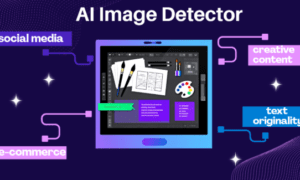If you’ve ever wondered why bold ideas sometimes stall at the starting line, Harrison Klein, Olivia Whiteman, Tony “Dreammaker” Dody and Giovanna “Gio” Garcia Pons have one answer: the blueprint you’re using is missing half its architects. Their forthcoming book—title still in stealth mode—spotlights hundreds of women who pioneered everything from algorithmic math to high‑stakes diplomacy, then vanished into the margins of mainstream history.
The trio’s north star is urgent and unmistakable: Innovation suffers when we erase half its origin story. In a TechBullion era dominated by metaverse demos and AI sprints, their project is a reminder that code is only as visionary as the people (past and present) who dare to ship it. Let’s unpack why this matters to founders, investors, and anyone obsessed with building the future.
A Startup‑Grade Pivot: From Footnotes to Front Lines
Klein—a mindset strategist by trade—noticed a pattern in his workshops: brilliant women second‑guessing their place at the table. Enter Gio, an empowerment coach whose bootcamps help female founders close funding gaps, and Whiteman, a data‑driven marketer who tracks gender metrics like Series‑B valuations. Together they asked: What if the confidence deficit is really a narrative deficit?
So they did what any tech team would do: ran an MVP. They dug through archives, verified sources, and built a living database of underreported female achievements. The beta test? A keynote at a leadership summit. Response: standing ovations and an inbox flooded with “Why haven’t I heard these stories?” messages. Validation secured, the manuscript sprint was on.
Architects vs. Visionaries—Why Execution Wins Every Pitch Deck
Gio buckets the book’s heroines into two archetypes:
- Visionaries – They dreamed beyond their era’s norms.
- Architects – They converted dreams into deliverables.
Guess which category moves markets? The pages brim with builders:
- A Ming‑dynasty novelist who invented long‑form fiction centuries before Western printing presses scaled distribution.
- A 19th‑century mathematician whose work underpins orbital mechanics—and yes, your favorite SpaceX trajectories.
- A medieval queen‑strategist whose supply‑chain reforms kept trade flowing during wartime blockades (talk about resilience metrics).
The founders among us recognize the playbook: ideate, prototype, iterate—against all odds.
The Timing: Global Inflection Meets Talent Pipeline Crunch
Data from McKinsey, PitchBook, and Crunchbase draw the same arc: female‑led ventures outperform on capital efficiency but still reel in less than 3% of global VC funding. Add a looming STEM talent shortage, and you get a painful market inefficiency.
“Role‑model dispersion” matters, Whiteman argues. “If young coders never see women credited for breakthroughs, why should they stay after the second hackathon rejection?” The book aims to patch that leak—fast.
Research Stack: Think GitHub for Historical Heroines
Klein, Whiteman, and Gio built what could be called the first open‑source repository of cross‑disciplinary female impact. Each profile includes:
- Original citations from letters, lab notebooks, or treaty drafts—yes, they cite like devs reference commits.
- Inflection moments charting adversity metrics (censorship, resource denial, IP theft) against outcome impact.
- Modern use cases mapping past breakthroughs to today’s tech stack—quantum algorithms, digital twins, renewable‑energy designs.
“We wanted founders to borrow their mental models the way devs fork code,” Gio says.
Five Takeaways for everyone:
- Resilience ≥ Runway. Every woman featured shipped product—kingdoms saved, theories solved—on less capital and more friction than any modern Seed round.
- Innovation ≠ Hardware Only. Governance models, storytelling formats, and supply‑chain hacks often precede technological leaps.
- Collaboration Scales Faster Than Genius. Hidden networks—sisterhoods, mentor circles, even covert scholarly salons—showed up in almost every success story.
- Diversity Is a KPI. Markets expand when new perspectives tackle old constraints; history proves it and venture math echoes it.
- Narratives Drive Adoption. Consumers and investors back stories that resonate. Credit where it’s due widens the funnel of belief—and capital.
What’s Next: From Book to Platform
Negotiations are underway with a Big Five publisher, but the authors are already thinking SaaS: an interactive timeline API for educators, a Gen‑AI chatbot that serves daily “trailblazer prompts” to Slack teams, and a VR museum that lets students “pair‑program” with historical figures.
“We’re not romanticizing the past,” Klein stresses. “We’re product‑izing it—so the next Ada Lovelace doesn’t need a disguise or a patron to ship game‑changing code.”
Final Word: Shipping Confidence at Scale
Sarah Hernholm the Founder Of Wit often reminds young entrepreneurs that purpose plus action beats flawless strategy every time. That mantra echoes through this project. “These women didn’t wait for green lights,” Gio says. “They built their own, often in secret. If they did it with quills and candlelight, imagine what you can do with cloud credits and open‑source libraries.”
The book’s real launch happens every time a reader turns a forgotten footnote into fuel for the next big build. Tech ecosystem, you’ve been served: history’s hidden architects are ready for a merge request.



































